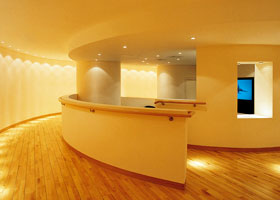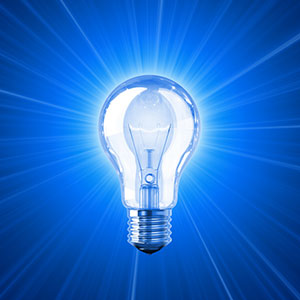
3605 Long Beach Blvd., Suite 100
Long Beach, CA 90807
Phone: 562.981.2200
Massage therapy has a long history in cultures around the world. Today, people use many different types of massage therapy for a variety of health-related purposes. In the United States, massage therapy is often considered part of complementary and alternative medicine (CAM), although it does have some conventional uses. This fact sheet provides a general overview of massage therapy and suggests sources for additional information.


Massage therapy dates back thousands of years. References to massage appear in writings from ancient China, Japan, India, Arabic nations, Egypt, Greece (Hippocrates defined medicine as "the art of rubbing"), and Rome.
Massage became widely used in Europe during the Renaissance. In the 1850s, two American physicians who had studied in Sweden introduced massage therapy in the United States, where it became popular and was promoted for a variety of health purposes. With scientific and technological advances in medical treatment during the 1930s and 1940s, massage fell out of favor in the United States. Interest in massage revived in the 1970s, especially among athletes.

According to the 2007 National Health Interview Survey, which included a comprehensive survey of CAM use by Americans, an estimated 18 million U.S. adults and 700,000 children had received massage therapy in the previous year.
People use massage for a variety of health-related purposes, including to relieve pain, rehabilitate sports injuries, reduce stress, increase relaxation, address anxiety and depression, and aid general wellness.

The term "massage therapy" encompasses many different techniques. In general, therapists press, rub, and otherwise manipulate the muscles and other soft tissues of the body. They most often use their hands and fingers, but may use their forearms, elbows, or feet.
In Swedish massage, the therapist uses long strokes, kneading, deep circular movements, vibration, and tapping. Sports massage is similar to Swedish massage, adapted specifically to the needs of athletes. Among the many other examples are deep tissue massage; trigger point massage, which focuses on myofascial trigger points - muscle "knots" that are painful when pressed and can cause symptoms elsewhere in the body; and reflexology, which applies pressure to the feet (or sometimes the hands or ears), to promote relaxation or healing in other parts of the body.

Massage therapists work in a variety of settings, including private offices, hospitals, nursing homes, studios, and sport and fitness facilities. Some also travel to patients' homes or workplaces. They usually try to provide a calm, soothing environment.
Therapists usually ask new patients about symptoms, medical history, and desired results. They may also perform an evaluation through touch, to locate painful or tense areas and determine how much pressure to apply.
Typically, the patient lies on a table, either in loose-fitting clothing or undressed (covered with a sheet, except for the area being massaged). The therapist may use oil or lotion to reduce friction on the skin. Sometimes, people receive massage therapy while sitting in a chair. A massage session may be fairly brief, but may also last an hour or even longer.

Although scientific research on massage therapy - whether it works and, if so, how - is limited, there is evidence that massage may benefit some patients. Conclusions generally cannot yet be drawn about its effectiveness for specific health conditions.
According to one analysis, however, research supports the general conclusion that massage therapy is effective. The studies included in the analysis suggest that a single session of massage therapy can reduce "state anxiety" (a reaction to a particular situation), blood pressure, and heart rate, and multiple sessions can reduce "trait anxiety" (general anxiety-proneness), depression, and pain. In addition, recent studies suggest that massage may benefit certain conditions, for example:
There are numerous theories about how massage therapy may affect the body. For example, the "gate control theory" suggests that massage may provide stimulation that helps to block pain signals sent to the brain. Other examples include theories suggesting that massage might stimulate the release of certain chemicals in the body, such as serotonin or endorphins, or cause beneficial mechanical changes in the body. However, additional studies are needed to test the various theories.

Massage therapy appears to have few serious risks - if it is performed by a properly trained therapist and if appropriate cautions are followed. The number of serious injuries reported is very small. Side effects of massage therapy may include temporary pain or discomfort, bruising, swelling, and a sensitivity or allergy to massage oils.
Cautions about massage therapy include the following:

There are approximately 1,500 massage therapy schools and training programs in the United States. In addition to hands-on practice of massage techniques, students generally learn about the body and how it works, business practices, and ethics. Massage training programs generally are approved by a state board. Some may also be accredited by an independent agency, such as the Commission on Massage Therapy Accreditation (COMTA).
As of 2007, 38 states and the District of Columbia had laws regulating massage therapy. In some states, regulation is by town ordinance.
The National Certification Board for Therapeutic Massage and Bodywork (NCBTMB) certifies practitioners who pass a national examination. Increasingly, states that license massage therapists require them to have a minimum of 500 hours of training at an accredited institution, pass the NCBTMB exam, meet specific continuing education requirements, and carry malpractice insurance.
In addition to massage therapists, health care providers such as chiropractors and physical therapists may have training in massage.
Some common licenses or certifications for massage therapists include:
| LMT | Licensed Massage Therapist |
| LMP | Licensed Massage Practitioner |
| CMT | Certified Massage Therapist |
| NCTMB | Has met the credentialing requirements (including passing an exam) of the National Certification Board for Therapeutic Massage and Bodywork, for practicing therapeutic massage and bodywork |
| NCTM | Has met the credentialing requirements (including passing an exam) of the National Certification Board for Therapeutic Massage and Bodywork, for practicing therapeutic massage |



The NCCAM Clearinghouse provides information on CAM and NCCAM, including publications and searches of Federal databases of scientific and medical literature. The Clearinghouse does not provide medical advice, treatment recommendations, or referrals to practitioners.
Toll–free in the U.S.: 1-888-644-6226
TTY (for deaf and hard-of-hearing callers): 1-866-464-3615
Web site: nccam.nih.gov
E-mail: [email protected]
A service of the National Library of Medicine (NLM), PubMed contains publication information and (in most cases) brief summaries of articles from scientific and medical journals. CAM on PubMed, developed jointly by NCCAM and NLM, is a subset of the PubMed system and focuses on the topic of CAM.
Web site: www.ncbi.nlm.nih.gov/sites/entrez
CAM on PubMed: nccam.nih.gov/camonpubmed/
|
IMPORTANT: The information on this website is NOT intended to substitute for the expertise and advice of a qualified healthcare professional. We encourage you to discuss any decisions about treatment or care with a qualified healthcare professional. The mention of any product, service, or therapy is NOT an endorsement. Neither the author nor the publisher shall be responsible for any damage or harm caused by the improper use of information in this website. |
|
Any diagnostic or treatment options presented herein are for general informational purposes and may NOT necessarily represent tests or treatments that your healthcare professional performs, provides, or would recommend. The information is simply provided for educational purposes and in a good faith effort to help patients make a more informed decision about their healthcare. Furthermore, any tests or treatments presented herein may NOT be comprehensive with regard to all the diagnostic or therapeutic options that may be available for any given medical condition or disease. Accordingly, you should always discuss any decisions about treatment or care with a qualified healthcare professional. |
This website may feature actors, models, or artistic representations. The actors and models may NOT have actually used or provided any product or service described or promoted in this website. These actors and models may be identified with the notification: "Model" or "Model – not actual patient". If actual patients are featured, they may be identified with the notification: "Actual subject", "Real subject", and/or "Before vs. After". Artistic renderings of any medical condition, disease, or treatment in this website are for illustrative purposes only and may NOT be a realistic depiction of actual medical conditions, diseases, patients, or treatments. Actual outcomes of any medical condition or actual results achieved by any treatment may be significantly different due to variations in the delivery of healthcare and the individual circumstances of each patient. |
|
"Massage Therapy: An Introduction" |